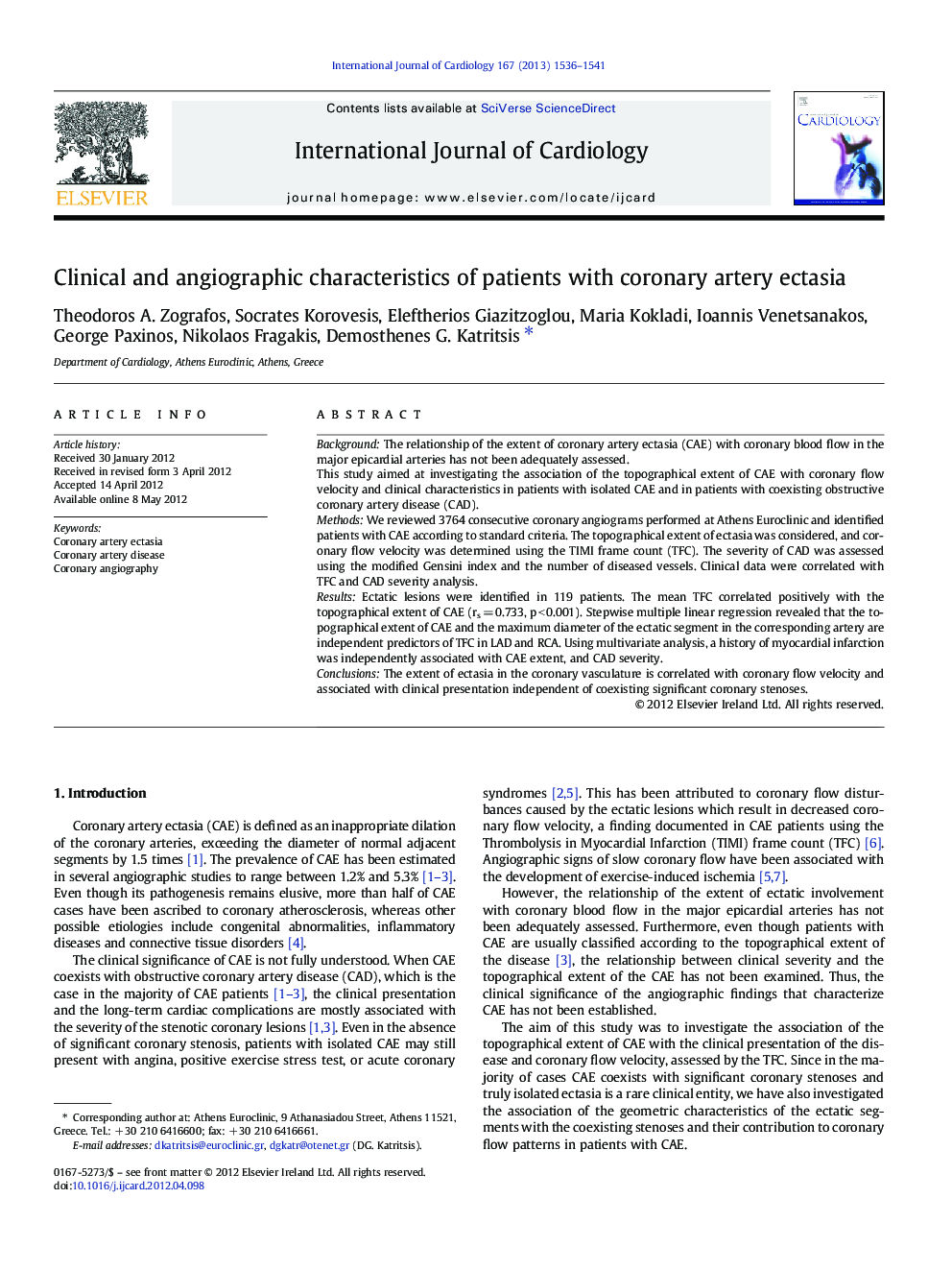| Article ID | Journal | Published Year | Pages | File Type |
|---|---|---|---|---|
| 5975613 | International Journal of Cardiology | 2013 | 6 Pages |
BackgroundThe relationship of the extent of coronary artery ectasia (CAE) with coronary blood flow in the major epicardial arteries has not been adequately assessed.This study aimed at investigating the association of the topographical extent of CAE with coronary flow velocity and clinical characteristics in patients with isolated CAE and in patients with coexisting obstructive coronary artery disease (CAD).MethodsWe reviewed 3764 consecutive coronary angiograms performed at Athens Euroclinic and identified patients with CAE according to standard criteria. The topographical extent of ectasia was considered, and coronary flow velocity was determined using the TIMI frame count (TFC). The severity of CAD was assessed using the modified Gensini index and the number of diseased vessels. Clinical data were correlated with TFC and CAD severity analysis.ResultsEctatic lesions were identified in 119 patients. The mean TFC correlated positively with the topographical extent of CAE (rs = 0.733, p < 0.001). Stepwise multiple linear regression revealed that the topographical extent of CAE and the maximum diameter of the ectatic segment in the corresponding artery are independent predictors of TFC in LAD and RCA. Using multivariate analysis, a history of myocardial infarction was independently associated with CAE extent, and CAD severity.ConclusionsThe extent of ectasia in the coronary vasculature is correlated with coronary flow velocity and associated with clinical presentation independent of coexisting significant coronary stenoses.
